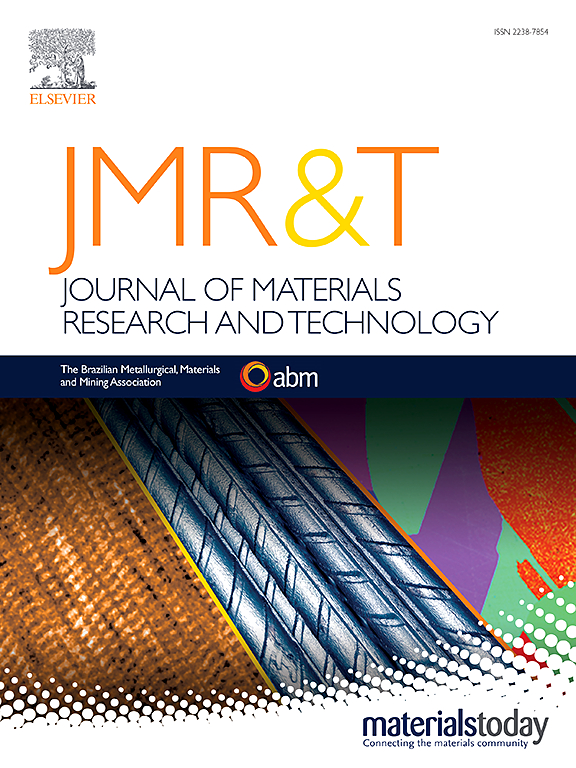Microstructural evolution and localized corrosion behavior of friction stir welded super duplex UNS S32760 in chloride-containing environments
IF 6.2
2区 材料科学
Q1 MATERIALS SCIENCE, MULTIDISCIPLINARY
Journal of Materials Research and Technology-Jmr&t
Pub Date : 2025-03-08
DOI:10.1016/j.jmrt.2025.03.042
引用次数: 0
Abstract
This study investigates the microstructural evolution and localized corrosion behavior of friction stir welded (FSWed) super duplex stainless steel 2507 (UNS S32760) sheets. The distinct regions on the top surface of the welded joint were examined by microscopy analysis, hardness measurements, and electrochemical polarization techniques in various environments. Discussion of the results focused on microstructure-property relationships, emphasizing these relationships in understanding changes in local corrosion behavior. Our main findings indicating a Cr2N precipitation, attributed to rapid cooling during the FSW process, at the ferrite/ferrite boundaries in the stir zone in the retreatment side (SZ/RS), stir zone (SZ), and thermomechanical affected zone in the advancing side (TMAZ/AS). This increases the degree of sensitization, resulting in reduced localized corrosion behavior at high potentials in a NaCl solution and diminished passivity in an HCl solution for the RS, SZ, and AS regions. In addition, a grain refinement was observed in the TMAZ/RS, SZ/RS, SZ, SZ/AS and TMAZ/AS regions. These findings unravel the relationship between microstructural evolution and localized corrosion behavior and underscore the critical importance of considering the exposure of FSWed SDSS UNS S32760 to oxidizing environments with chlorides. This consideration has significant implications, including potential challenges related to pitting, intergranular corrosion, and stress corrosion cracking, which should be carefully addressed in practical applications and future research.
求助全文
约1分钟内获得全文
求助全文
来源期刊

Journal of Materials Research and Technology-Jmr&t
Materials Science-Metals and Alloys
CiteScore
8.80
自引率
9.40%
发文量
1877
审稿时长
35 days
期刊介绍:
The Journal of Materials Research and Technology is a publication of ABM - Brazilian Metallurgical, Materials and Mining Association - and publishes four issues per year also with a free version online (www.jmrt.com.br). The journal provides an international medium for the publication of theoretical and experimental studies related to Metallurgy, Materials and Minerals research and technology. Appropriate submissions to the Journal of Materials Research and Technology should include scientific and/or engineering factors which affect processes and products in the Metallurgy, Materials and Mining areas.
 求助内容:
求助内容: 应助结果提醒方式:
应助结果提醒方式:


